Fishing Report: Christmas 2021

Lane snapper fishing opens in Gulf -- an early Christmas gift
Lane snapper finally re-opened near shore in federal waters. It?s a little early Christmas present for those fishing near shore, where lane snapper are plentiful starting around 40-50 feet and up to 100-110 feet deep, says Captain Dylan Hubbard of Hubbard's Marina.
MADEIRA BEACH, Fla. - Every Friday morning, Captain Dylan Hubbard of Hubbard's Marina joins Good Day to fill viewers in on his fishing forecast as we head into the weekend.
Here is his fishing report for December 24, 2021.
Weather effects on fishing
We have the last quarter moon phase coming up Sunday with a high pressure subsiding over the area. This comes before a stronger high pressure pushes its way back into the area mid-week.
This trend looks to be bringing us somewhat moderate conditions -- wind and wave-wise -- over the next work week. However, with clear blue skies and not much movement to the water, it could get a little pickier this week with fish becoming more finicky and leader shy as waters calm and clear up substantially.
Over the weekend and into the first half of the week, lighter tackle and smaller baits will be key while fishing inshore and near shore. There are lots of small fry bait around right now so live shrimp, small lures or the smaller live whitebait is a great option bait-wise.
LINK: FOX 13 weather forecast
Once winds pick up a bit more towards the second half of the week, waters may get more stirred up, allowing for normal tackle options to come back as fish won’t be quite as leader shy. But the high pressure could give them a bit of lockjaw making it super important to hit your spots at those optimal feeding times when the solunar tidal periods are causing the most water movement and thus, the most feeding action.
FOG WARNING! One downside to moderate weather this time of year is that the warming weather will likely bring fog with it. We are looking at some models showing the worst of it starting over Christmas weekend and persisting into the work week. We have warmer air temperatures coming and the water’s surface is cooler than the air, which brings us that dense sea fog that doesn’t burn off but sometimes gets worse as the sun rises.
Be aware of this as your plan trips and make sure to slow down out there and be vigilant!
Inshore
Redfish have been very active this past week. Prior to the big front, we saw a lot of fish moving around the area and feeding actively. Mangrove shorelines, grass flats, oyster bars, and residential dock lines were all productive areas for the redfish. We even saw some nice fish around the passes as well as around bridge lights and dock lights at night cruising the bottom. There are lots of mullet moving right now as the redfish move with the schools, looking for baits spooked out of the grass behind the mullet schools.
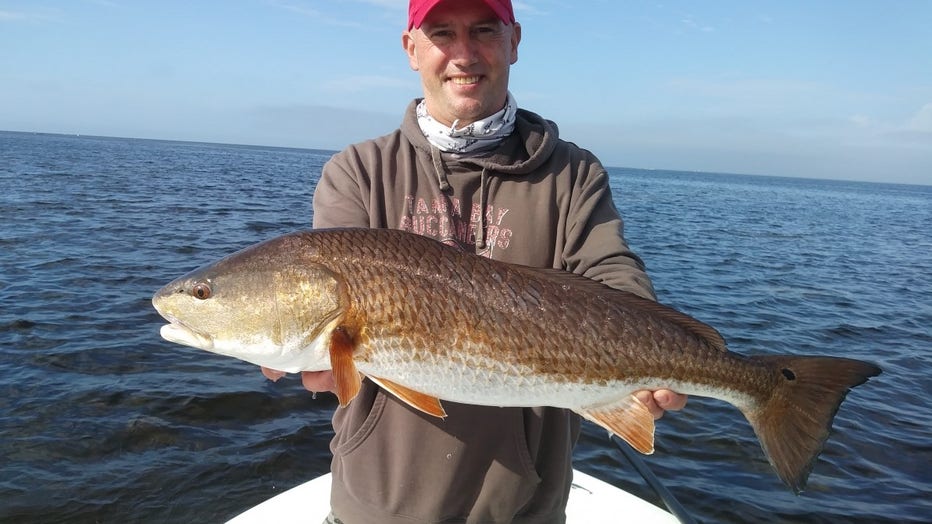
Redfish (Credit: Hubbard's Marina)
Cut mullet, threadfin, or pinfish are great dead bait options around those schools or docks. Live shrimp is also a great option for redfish or slow-moving soft plastics on or near the bottom.
Snook action seemed to have picked up over the weekend but then dialed back slowly as the front pushed into the area. We are hoping that will pick up with this little warm spell we are having. It should bring more snook feeding actively back to the passes as the bait moves around.
We have seen some solid snook around bridge lights, dock lights. Prior to this recent front, we had a big push of snook feeding actively in the passes. Likely we will see that again this week. On the flats, we are seeing them be more leader shy and picky with the clear waters, but you can get them to chew at the right tides when that water is moving well.
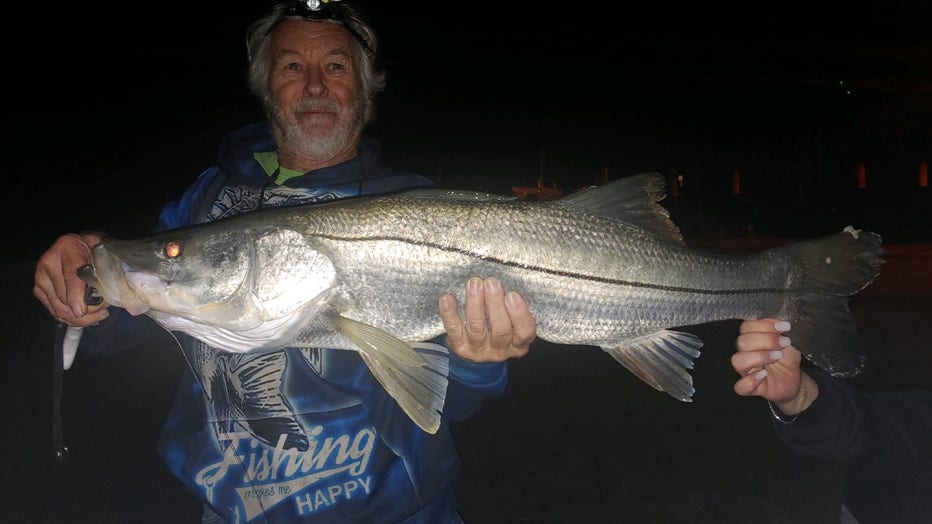
Snook (Credit: Hubbard's Marina)
Trout action has been tougher. A few big ones were caught, but overall, we are seeing smaller fish and not huge concentrations like we normally would this time of year.
However, it’s still early and hopefully, we will see this trout proliferation if we ever get some solid cool water temperatures that hang out in the bay. Live shrimp and soft plastics have been key for the trout bite that we have seen recently.

Trout (Credit: Hubbard's Marina)
Sheepshead are thick around the area at docks, bridges, piers, and some jetties. We’re really seeing decent concentrations of sheepshead despite the warmer waters. Lighter tackle, small hooks, minimal weights, and a small piece of shrimp, clams, oysters, or a fiddler crab is the best option.
However, we are seeing some even biting soft plastics as anglers work dock lines for snook and redfish.
Surprisingly, the mackerel seem to persist around the bay still too. They have gone in and out a bit with warming and cooling waters. However, this last warm spell spread them out and we saw them on those deeper flats and around the edges and passes. As always, faster-moving baits, live whitebait, or sometimes live shrimp worked well to get them chewing.
Near shore
Lane snapper finally re-opened in federal waters along our near shore waters. It’s a little early Christmas present for those fishing near shore where lane snapper are plentiful starting around 40-50 feet and up to 100-110 feet -- sometimes even inside and outside the range too.
We are pumped to be able to keep these great-eating fish again that many picture as bycatch, but man, does it get felt when one of the staple bycatch species is closed.
We are just a few days away from red grouper re-opening near shore, but for now, we get to focus on the last few days of gag grouper season. So often people get so focused on gags and then when they close, they stop fishing because ‘grouper aren’t open,’ Well, there’s scamp, red grouper, and strawberry grouper to catch after January 1!
For now, the gag bite has been a little soft on the backside of that long stretch of calm, clear conditions. However, with this recent front, we are hoping it got those fish moving again to refresh the near shore waters with some fish for our last stretch of gag grouper harvest.
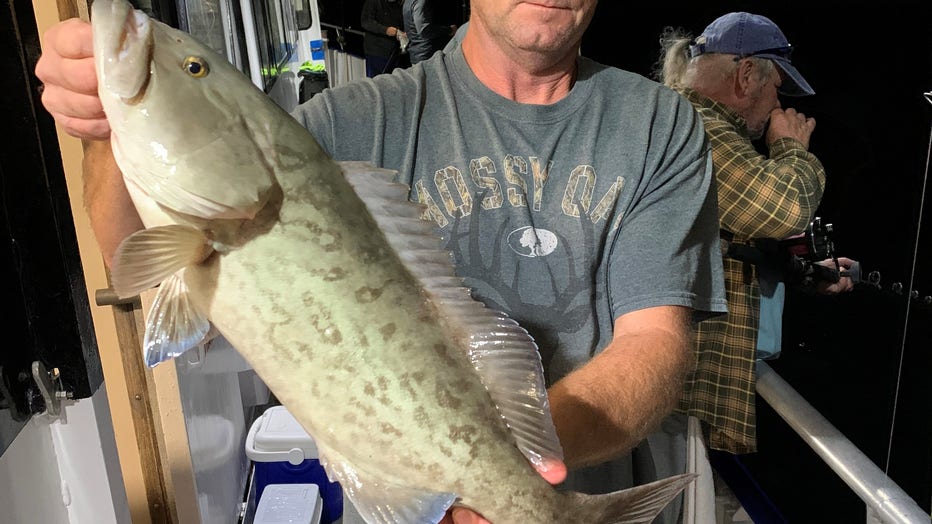
Gag grouper (Credit: Hubbard's Marina)
Look for them around those ledges, rock piles, and hard bottom structures starting around 40-60 feet up to the deepest offshore waters. Live pinfish, dead threadfins, squirrelfish and a variety of baits have worked to help us target these gag grouper.
Hogfish action has been steady for us too near shore, the big weather kept us off the water for a few days but we’re confident the backside of this thing will help to re-concentrate and refresh our near shore hogfish population.
Live shrimp, fiddler crabs, sandfleas and even rock shrimp are all great options for the hogfish on around 20-30lb floro and a 3-4ot hook. Some use even smaller hooks and lighter leader, but this is a safe range for those big mouths and sometimes hard-fighting hogfish.
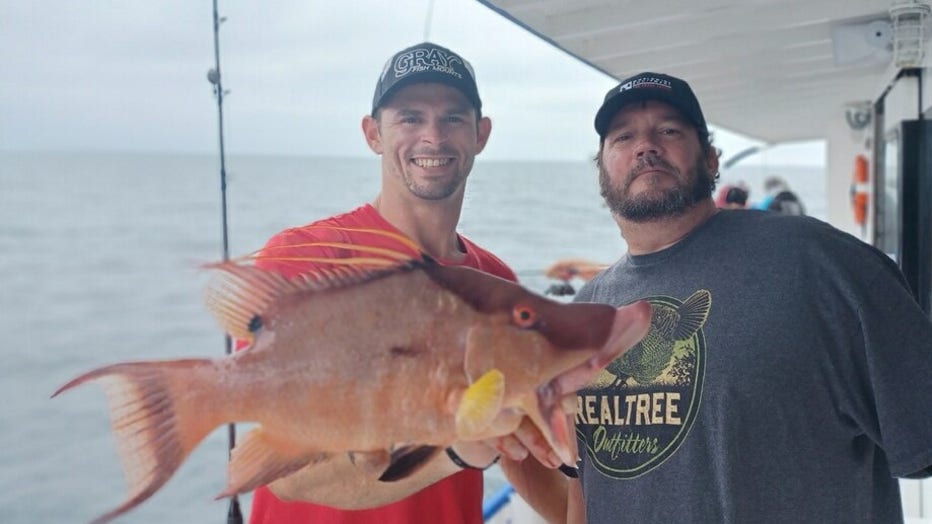
Hogfish (Credit: Hubbard's Marina)
Mangrove snapper are still around near shore, but we’re definitely not seeing huge concentrations of them as of late. We’re still picking a few while targeting the hogfish in shallower, but once you get to the deepest near shore waters around 70-100 feet you have much better luck finding these guys in greater quantities.
We haven’t seen much pelagic action near shore this week, but the upcoming week’s warming weather will perhaps bring us another handful of kingfish near shore. Always have that flat line and pitch rod ready when bottom fishing.
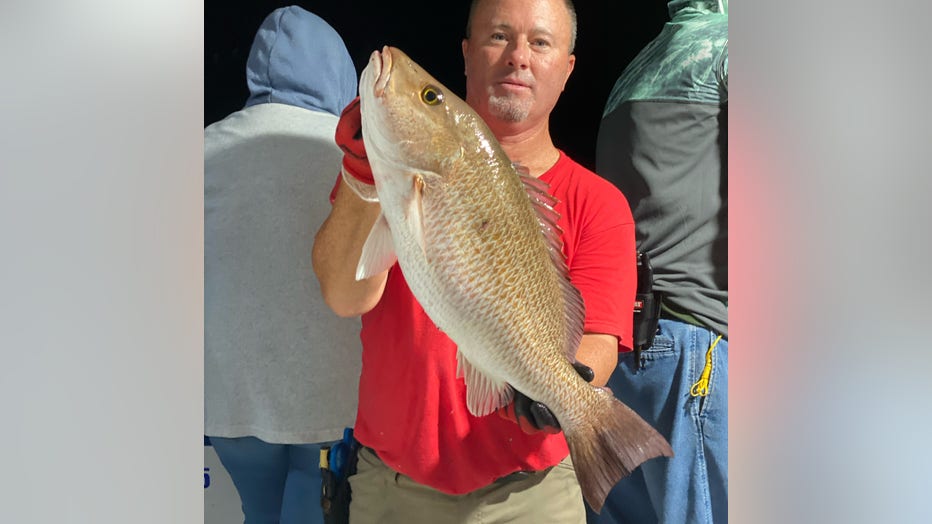
Mangrove snapper (Credit: Hubbard's Marina)
Offshore
Gag grouper bite has been steady offshore lately, and not quite as crazy as it was with that long spell of warming calm conditions. However, we’re hoping this big front stirred ‘em up enough to get the fish moving and bring with it some excited gag grouper as we race offshore behind the front today to try and pick off some keeper gags before the season ends.
From what I have seen so far, it seems they are excited behind the front and will be biting well through the weekend. Live bait and even dead bait are good options out there in deep water. It seems like the dead bait and anything works while they are excited. The live bait is needed as the bite slows down on the backside of the stops offshore.
Mangrove snapper have been biting well offshore lately too. Overcast daytime conditions allowed them to bite well for us during our last offshore 39-hour adventure. However, the upcoming week’s high pressure and blue skies will likely hinder that daytime mangrove bite moving most of the action to the night, early morning, and dusk time frames.
Scamp grouper have been biting well mixed in with the gags on the ledges, peaks, and rock piles we target offshore. However, once gags close and we push deeper for red grouper we normally see a more consistent bite of really big scamp grouper out there in the 160-250 feet range on the potholes and smaller ledges and large areas of hard bottom we target for the red grouper.
We have seen some nice yellowtail, almacos, vermillions, and porgies while offshore fishing for the mangroves, gags, and scamp grouper. Once we push deep after the first of the year to target those fat deep water red grouper on potholes, we should see some really large-sized vermillions and plentiful porgies mixed in with the potential for those large sized yellowtail too.
Don't be a fool; bring a venting tool and/or a descending device
It is so important to keep in mind the importance of dead discards and discard mortality when engaged in near shore or offshore fishing. If we can all work together to change the cultural norms near shore and offshore, we can all help to improve our fishery and our fishery access over time.
How many do you know right now that are all for catching and releasing snook, redfish, and trout but will be the first in line to kill a mangrove snapper, gag grouper or red snapper and the attitude completely changes when discussing these offshore species?
Plus, the same person inshore that will hold their breath and wet their hands before handling a breeder snook will go offshore and then cull through 20 red snappers before keeper their two red snapper they deem large enough to fill their two-fish bag limits while the other 18 they released will often end up suffering fatal damage if not properly descended or vented?
Please help us to spread the word on the importance of descending or venting your released fish. Descending devices are most easy to use and quick to pick up on their use and are most effective for most anglers. However, an expert and precise angler with proper training and tons of experience can use a venting tool properly with similar outcomes. However, a venting tool requires you to pierce the fish while most descending devices are much less invasive.
While using a venting tool it is imperative you pierce them in the exact right spot, and you do not go but a quarter-inch or less in the fish. Most venting tools require you to ‘choke up’ on the tool to prevent over-penetration into major organs.
When fishing deep water, especially in the sweltering summer months, please make sure to treat all fish intended to be released like that breeder snook inshore and minimize the time it takes you to get him from the bottom to the boat using heavier proper tackle not an ultra-light spinning reel. Then once onboard, minimize the time out of the water. Then use a proper dehooking tool, and then for the love of God, use a descending device or venting tool PROPERLY to ensure that fish has a chance to live another day.
Three things will help ensure the survivability of those fish released offshore.
- Making sure they are brought up quickly and do not expend all their energy in the fight.
- Make sure they are unhooked smoothly, easily, and as quickly as possible.
- Finally, make sure they spend the least amount of time at the surface at negative pressures where barotrauma exponentially increases its effect with each passing second.
Also, keep in mind when the water is warm there is less dissolved oxygen content, and the chances of barotrauma increase even more while its effects can be even more deadly.
CHECK OUT THE NEW WEBSITE and marketing campaign to get your own FREE descending device and more information on mitigating barotrauma and barotrauma issues! Do not forget to use the hashtag #ReturnEmRight to help spread the word too on fish you catch and release offshore -> https://returnemright.org/
State survey to improve recreational data and access
It is imperative that you have your gulf reef fish survey endorsement on your fishing license if you are a private recreational angler or diver fishing from a private boat anywhere in Florida who intends to harvest, attempt to harvest or possess one or more of the following reef fish species: mutton snapper, yellowtail snapper, hogfish, red snapper, vermilion snapper, gag grouper, red grouper, black grouper, greater amberjack, lesser amberjack, banded rudderfish, almaco jack, gray triggerfish, Gag grouper, Red grouper, Scamp grouper, Mangrove snapper, Lane snapper, Kingfish, Tuna, or Mahi mahi.
Here is all the information and more on that program and how you can sign up -> https://myfwc.com/fishing/saltwater/recreational/state-reef-fish-survey/
TERMS OF REFERENCE:
INSHORE – from the back bays out to the bridges and including right on the beaches
NEAR SHORE – From the beaches out to 20 miles, or up to 100ft of water
OFFSHORE – from 20 miles or 100ft and beyond
For more fishing reports, photos, videos and more check out Hubbard’s Marina on Facebook, Instagram, YouTube, or Snapchat. Just simply search "HubbardsMarina" and do not forget our family motto, "If you’re too busy to go fishing, you’re just too busy!

